Porto-North-Portugal.com
The best independent guide to Porto
Porto-North-Portugal.com
The best independent guide to Porto
Porto in the winter
A winter visit to Porto offers a distinctly atmospheric experience, far removed from the bustling crowds of the summer season. It is a time when the city’s historic character feels most pronounced, and a unique charm emerges on its rain-slicked, cobbled streets.
The primary advantages of a winter trip are the significant reduction in tourist numbers and the exceptional value for money. This allows you to explore iconic sights like the Livraria Lello or the Ribeira district at a relaxed pace, complemented by lower prices for flights and accommodation.
The main consideration for any winter visit is the weather. Porto’s Atlantic climate means that rain is frequent between November and February, but the city is well-equipped for wet days with a fantastic selection of indoor attractions. These include the opulent Palácio da Bolsa, the gilded Igreja de São Francisco, and the historic Port cellars of Vila Nova de Gaia. The key to a successful trip is having a flexible plan that can adapt to the unpredictable weather.
This guide provides a detailed overview for visiting Porto in winter, covering the weather, the best seasonal activities, and a suggested itinerary.
Porto's Winter Weather
The weather is a key consideration for a winter trip to Porto. The city and the wider region of northern Portugal are known for being wet from November to February, a climate pattern caused by moisture-laden westerly winds blowing in from the Atlantic Ocean.
This results in an average of 153 mm of rainfall per month, with around 16 wet days expected. The rain can vary from intense, short showers to prolonged periods of light drizzle.
Despite the rain, temperatures remain mild. Daytime temperatures average 15-17°C (59-63°F), cooling to 8-9°C (46-48°F) at night, with January typically being the coolest month. While Porto's winter weather is wetter than that of Lisbon or the Algarve, it remains significantly milder than in most of northern Europe, providing a welcome escape from harsher climates.
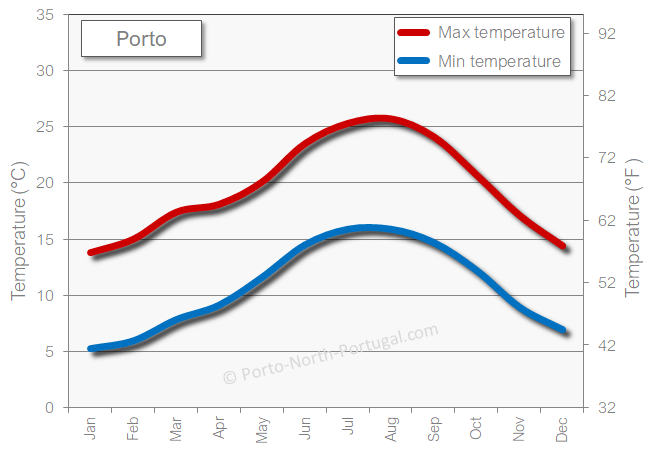
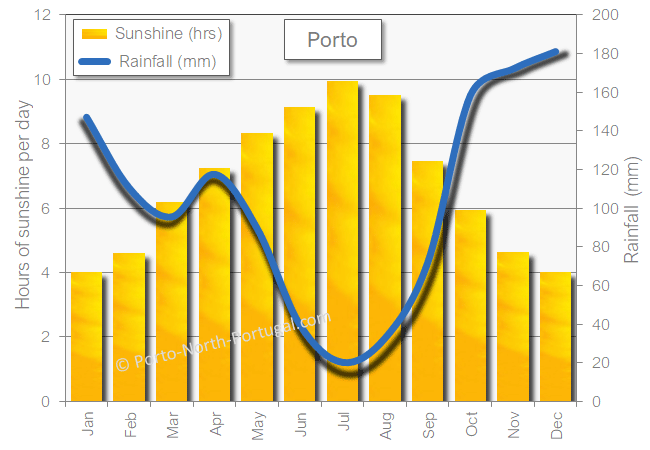
Planning Your Trip Around the Weather
A flexible approach to your itinerary is essential for a successful winter trip to Porto.
The winter months are the low season, which means there is little need to pre-book tours, tickets, or even accommodation. The one exception is the Christmas and New Year period (from 23 December to 2 January), when tourism increases. This freedom from advance bookings allows you to adapt your plans based on the daily weather forecast.
The best strategy is to have a list of potential activities, mixing both indoor and outdoor options. Save day trips to destinations like Guimarães and Braga for dry, clear days to fully enjoy them. Conversely, rainy days are ideal for exploring Porto's excellent indoor attractions. A tour of a Port cellar, for example, is a much better use of a wet afternoon than a day with clear skies.
This flexible mindset can even extend to your accommodation. With last-minute hotel bookings readily available, it is possible to travel south to Lisbon or the Algarve during a prolonged period of poor weather and return to Porto when conditions improve.
How Long to Stay in Porto during the winter
Two full days is the ideal amount of time to explore the city of Porto itself, making it a perfect destination for a weekend break. A three-day trip allows for a more in-depth visit and provides the opportunity to take a day trip to a nearby historic town.
The holiday can easily be extended to five or seven days by using Porto as a base to discover the surrounding region, including destinations such as Braga, Guimarães, and the Douro Valley. For a week-long trip to Portugal, many visitors choose to divide their time between Porto, Lisbon, and the Algarve.
Suggested 3-Day Itinerary
• Day 1: Porto's Historic Centre The first day covers the historic heart of the city. This area contains key sights such as the magnificent tile murals of São Bento Station, the ancient Sé Cathedral, the vibrant Ribeira district along the riverfront, and the panoramic city views from the top of the Clérigos Tower.
• Day 2: Vila Nova de Gaia and Port Wine The second day focuses on Vila Nova de Gaia, located across the Dom Luís I Bridge. This area is home to the historic Port wine cellars, where visitors can take a tour to learn about the production process and enjoy a tasting. A visit to the famous Livraria Lello bookstore in Porto could also be included on this day. The Port cellars are an excellent indoor activity for a rainy winter afternoon.
• Day 3: Day Trip to Guimarães A three-day stay allows for a day trip to Guimarães, known as the "Birthplace of Portugal." The town features a beautifully preserved medieval centre, an imposing 10th-century castle, and the grand Palace of the Dukes of Braganza. As this is an outdoor-focused day, it is best saved for a day with a favourable weather forecast; if rain is expected, it can be swapped with the indoor activities of Day 2.
Suggested 5-Day Itinerary
• Days 1-3: The first three days follow the 3-day itinerary outlined above, covering Porto’s historic centre, Vila Nova de Gaia, and a day trip to Guimarães.
• Day 4: Foz District or Indoor Museums The fourth day offers an opportunity to explore Porto's coastal Foz district and the Crystal Palace Gardens, which provide panoramic views of the city and river. For a wet day, excellent indoor alternatives include a tour of the opulent Palácio da Bolsa, the contemporary art at the Serralves Museum, the Soares dos Reis National Museum, or the Estádio do Dragão stadium tour.
• Day 5: Day Trip to Braga A five-day trip allows for a second day trip, this time to Braga, one of Portugal’s oldest cities. It is known as the country's religious heart, and its main attraction is the Bom Jesus do Monte sanctuary with its spectacular baroque stairway. Other key sights include the medieval Braga Cathedral and the charming historic centre
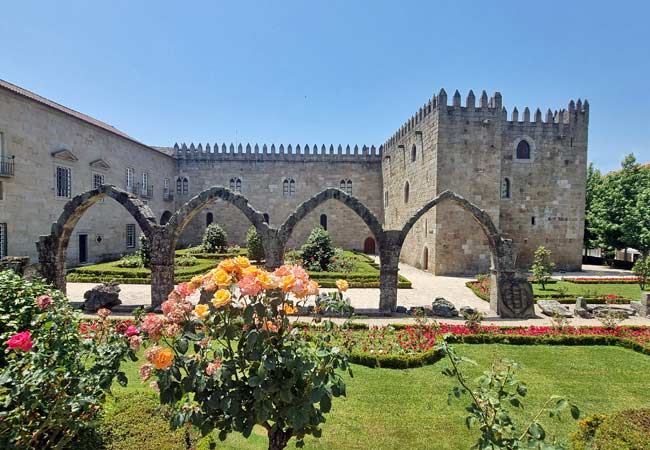
What to Pack for a Winter Trip
Packing for a winter trip to Porto should focus on versatile layers to accommodate the changeable weather. As conditions can be wet and nights are often chilly, a practical wardrobe is essential.
Key items to include are a waterproof jacket, warm sweaters or fleeces, and long-sleeved shirts for layering. Comfortable, water-resistant walking shoes are vital for the city's cobbled streets. An umbrella is also a necessity. It is also a good idea to pack one or two smarter outfits for evening meals or a night out.
Southern Portugal for Better Weather
For visitors on a longer holiday who encounter a prolonged period of poor weather in Porto, heading south offers a good chance of finding sunshine.
Lisbon is just a 2.5-hour train journey away and typically has warmer temperatures and less rainfall during the winter. The capital provides a wealth of indoor and outdoor attractions, from its historic neighbourhoods to its world-class museums.
If the weather is also poor in Lisbon, the Algarve region is a further train ride south (approximately 5.5 hours from Porto). While not beach weather, a winter visit to the Algarve is ideal for coastal walks, exploring historic towns, and enjoying fresh seafood in a relaxed atmosphere.
Remember, flexibility is key when travelling in Portugal during winter.
Porto's Best Indoor Sights for a Wet Day
Rainy days in Porto provide the perfect opportunity to explore the city's outstanding indoor attractions.
Port Cellar Tours and Tastings
Located in Vila Nova de Gaia, on the southern banks of the Douro River, the historic Port cellars are an ideal destination for a wet afternoon. All offer guided tours that explain the unique production process of Port wine, concluding with a tasting session.
While there are many cellars to choose from, several are particularly recommended:
• Taylor’s and Graham’s are known for their premium tours and high-quality vintage Ports. Both are located high on the hill of Gaia and offer fantastic panoramic views from their tasting rooms.
• Cálem offers a modern, interactive museum experience alongside its traditional tour, making it a popular choice.
• Ferreira is notable as the only major Port house that has always remained in Portuguese ownership, providing a tour focused on local heritage.
• Sandeman, with its iconic "Don" logo, offers one of the most historic and atmospheric cellar tours.
Tasting options range from standard flights of ruby and tawny Ports to premium selections paired with cheeses or chocolates. Even in winter, it is advisable to book tours online in advance to secure a place.
Related article: Guide to Porto's port cellars
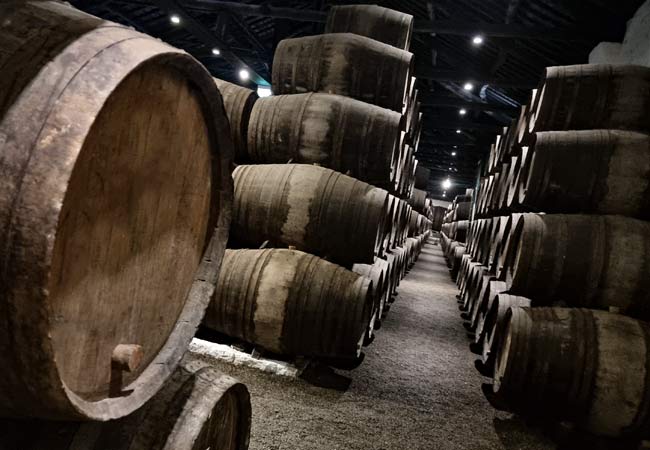
Mercado do Bolhão
The Mercado do Bolhão is Porto’s historic central market, housed in a beautiful two-story neoclassical building from 1914. The market is a vibrant hub of local life, with vendors selling fresh fish, meats, cheeses, produce, and flowers. The upper floor contains a food court with several small restaurants, making it an excellent place to shelter from the rain and enjoy a traditional lunch.
Serralves Museum & Villa
The Serralves Estate is one of Portugal's most important cultural institutions and can easily fill half a day. The estate contains a world-class contemporary art museum, a stunning Art Deco villa, and extensive gardens.
The Serralves Museum, designed by Pritzker Prize-winning architect Álvaro Siza Vieira, features a leading collection of Portuguese and international art from the 1960s to the present day. A short walk from the minimalist museum building is the Casa de Serralves, a perfectly preserved Art Deco villa that offers a fascinating look at the design and lifestyle of the 1930s. The contrast between the two buildings is a highlight of any visit.
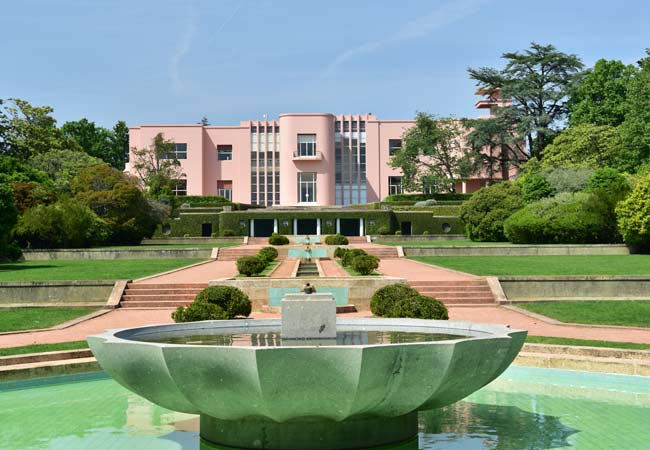
The art-deco Casa de Serralves villa with the grounds of the Fundação Serralves complex
Palácio da Bolsa
Porto's 19th-century former stock exchange, the Palácio da Bolsa, is a masterpiece of Neoclassical architecture and one of the city's most impressive historic buildings. Funded entirely by the city's merchants, its lavish interiors were designed to display Porto's commercial power to foreign investors.
Access is by guided tour only, which takes visitors through a series of magnificent rooms, including the Portrait Room and the Golden Staircase. The tour's undeniable highlight is the Arab Room, an octagonal hall inspired by the Alhambra Palace in Granada. Its walls and ceiling are covered in intricate Moorish-style stucco, decorated with an estimated 18kg of gold leaf.
Soares dos Reis National Museum
Housed in the grand, neoclassical Carrancas Palace, the Soares dos Reis is Portugal's oldest public museum, founded in 1833. Its extensive collection covers Portuguese art and decorative arts from the 16th to the 20th centuries.
The museum is named for the celebrated 19th-century Portuguese sculptor, António Soares dos Reis, and his masterpiece "O Desterrado" (The Exile) is a key highlight. Beyond sculpture, the museum has a significant collection of Portuguese painting, ceramics, glassware, and jewellery. A visit offers a dual experience: appreciating the art itself while also exploring the grand rooms of a former 18th-century aristocratic palace.
Estádio do Dragão
For football fans, a tour of the Estádio do Dragão, home of FC Porto, is an excellent activity for a rainy day. The stadium, which has a capacity of over 50,000, was built to host matches for the Euro 2004 tournament.
The combined museum and stadium tour provides a comprehensive look into the club's successful history. The tour allows access to areas normally closed to the public, including the players' changing rooms, the press room, and the pitch-side dugouts, before concluding with a walk down the players' tunnel.
Livraria Lello
Livraria Lello is one of the world's most famous bookstores, celebrated for its remarkable neo-Gothic interior. Opened in 1906, its main features are the magnificent, curving central staircase, ornate wood carvings, and a large stained-glass skylight.
The bookstore’s international fame grew from its association with author J.K. Rowling, who was a regular visitor when she lived in Porto. This has led to immense popularity, and the bookstore is almost always crowded. It is essential to book a ticket online in advance to secure an entry time. The ticket price is redeemable against any purchase in the store.
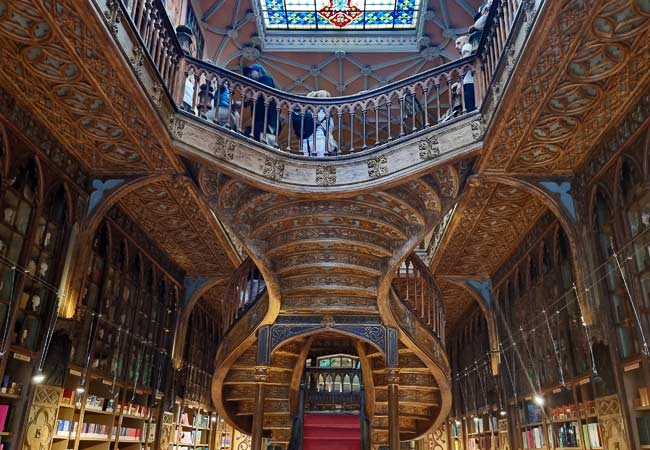
Listen to a Fado Performance
Listening to Fado, Portugal's traditional and melancholic music, is an excellent way to spend a winter evening. This UNESCO Intangible Cultural Heritage is traditionally performed in dedicated 'Fado houses' (Casas de Fado), where musicians and a singer perform in an acoustic setting. For an alternative experience, some Port cellars in Vila Nova de Gaia combine their tours and tastings with a Fado performance, offering a convenient way to experience two of Porto's cultural highlights at once.
Activities to Reconsider in Poor Weather
While many activities are suitable for winter, some are best avoided during periods of heavy rain or fog for reasons of enjoyment.
• The Six Bridges River Cruise: The main appeal of this cruise is the open-air view of the six bridges and the city skyline. In rain or fog, visibility is poor, and while the boats have a covered section, the experience is significantly diminished.
• Douro Valley Boat Tours: A full-day boat tour of the Douro Valley is also highly dependent on the weather. The region's main appeal is its spectacular landscape of terraced vineyards lining the river. During heavy rain or fog, these views will be obscured, and the primary purpose of the trip is lost.
If you've found our content valuable, we'd welcome your support.
The digital publishing landscape has evolved significantly. As a small independent publisher, we face growing challenges. Search engines increasingly favour paid content over organic results, while AI-generated content often reproduces original work without attribution.
To support our work, please consider bookmarking this page (press Ctrl + D) for quick access. If you find an article helpful, we'd be grateful if you'd share it with friends on social media.
For specific questions, please see our Reddit community at r/LisbonPortugalTravel.
Should you notice any outdated or incorrect information, please contact us at [email protected]
Thank you for helping us continue to provide valuable content in an increasingly challenging digital environment.





























